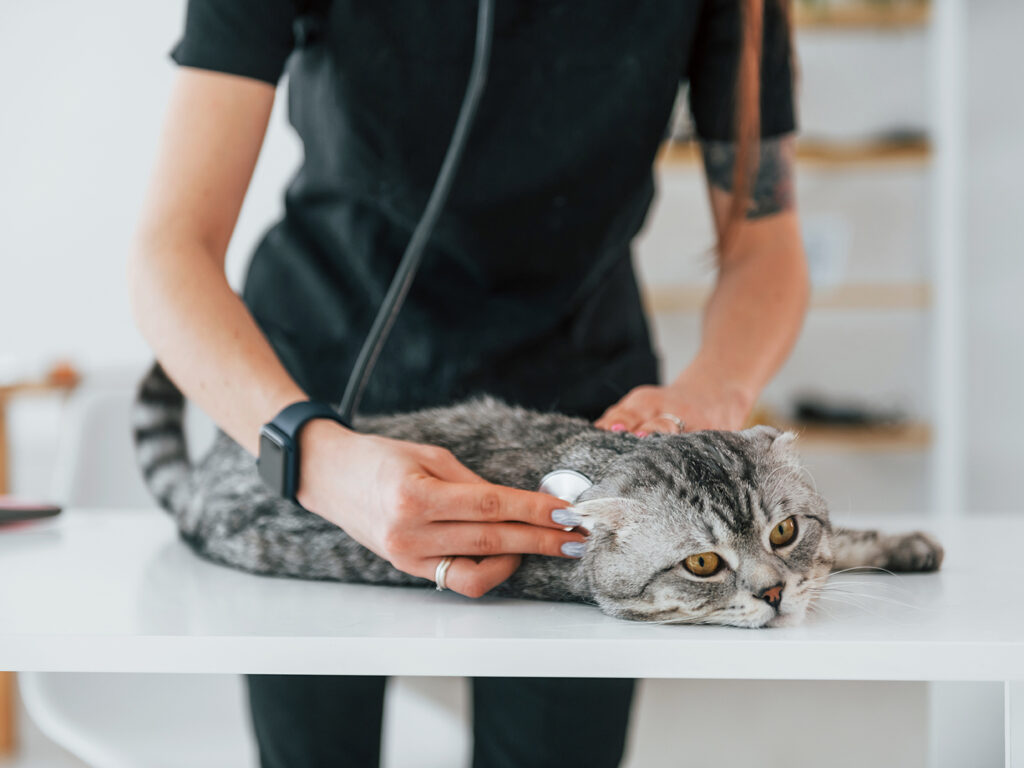When Every Second Counts: Recognizing Pet Emergency Signs

As a pet owner, it’s natural to be concerned about your furry friend’s health and well-being, but knowing when to seek emergency veterinary care can sometimes be challenging.
To help clarify this, Dr. Lance Wheeler, a clinical assistant professor of emergency and critical care at the Texas A&M School of Veterinary Medicine & Biomedical Sciences, and Wendy Greathouse, a referral coordinator for Texas A&M’s Veterinary Medical Teaching Hospital, provide guidance on identifying and responding to pet emergencies.
Emergency Or Urgent Issue?
According to Wheeler, there are two categories of emergencies.
“There are emergencies that are immediately life-threatening, like being hit by a car, and emergencies that become life-threatening after an unknown period of time, such as ingesting a toxin that doesn’t display symptoms until 48 or 72 hours later,” Wheeler said. “Beyond these two major categories, emergencies will most likely fall under intoxications, trauma, or an underlying condition that will require medical exams to determine what is wrong.”
Life-threatening emergencies require immediate veterinary attention, and getting your pet to the vet as soon as possible can make a significant difference in their chances of survival.
While not every health concern is an emergency, there are urgent medical concerns that can significantly impact a pet’s health. These issues are not usually life-threatening, but prompt veterinary attention also can lead to an improved outcome.
“This could include a fracture or broken bone, which is not usually life-threatening, but if we can get them to a surgeon sooner, the bone might heal better,” Wheeler said. “Other signs of an urgent issue that’s not necessarily life-threatening at the moment include blood in a pet’s urine, vomit, or stool.”
Types Of Emergencies
Intoxications occur when pets ingest harmful substances, causing a wide range of symptoms. According to Greathouse, common causes of pet intoxications include being bitten by a snake or ingesting human medications, common household cleaners, holiday foods, spoiled food, or seasonal plants such as lilies, oleanders, and poinsettias.
“Unless instructed otherwise, you should not try to induce vomiting because it can delay veterinary attention and cause injury,” Wheeler said. “Instead, drive your pet to the vet as soon as possible and call either the veterinarian’s office or a pet intoxication hotline on your way so that treatment is not delayed. The pet will have a better chance of survival in almost every scenario if we can get the toxin out of their system sooner.”
Greathouse also recommends having specific information ready when you call.
“Be prepared to provide as much information as you can pertaining to the intoxication, such as what they ingested, how much they ate, the pet’s weight, and what time the incident occurred,” Greathouse shared.
Trauma, on the other hand, can result from various incidents that may lead to burns, wounds, bleeding, or pain. If you witness your pet experiencing trauma or suspect they may have been injured, it’s crucial to seek immediate veterinary care.
“Something as silly as running into a tree or falling a distance as short as one foot and hitting their head could be life-threatening, which is why it is best to visit a veterinarian instead of playing a guessing game with yourself,” Wheeler said. “Just because your pet seems to be looking at you fine and acting normal doesn’t mean they are.”
In some cases, pets can exhibit signs of illness or distress — including an inability to stand or walk, heavy breathing, seizures, vomiting, or abnormal behavior — without a clear cause.
“If it is not a toxin or trauma, almost every other problem will require a physical examination so that we can start doing tests to try and figure out what is wrong,” Wheeler said. “To determine the cause, veterinarians will need more information than what is provided over the phone, such as heart rate, blood pressure, and body temperature.”
When In Doubt, Call And Talk It Out
The first step in responding to a pet emergency should start long before the emergency may arise.
Greathouse encourages owners to create an emergency plan that includes phone numbers of the closest emergency clinic(s), your pet’s veterinarian, hotlines for potential animal poison or toxin exposures, and your phone number, in case someone is pet sitting for you.
“It’s a normal response for owners to panic when there is an emergency, but having those phone numbers nearby or in your phone can provide a sense of preparedness and enable you to act quickly and calmly,” Greathouse said.
Recognizing the signs of a pet emergency and understanding the types of emergencies that require immediate veterinary care are essential for pet owners. If owners are unsure whether a pet’s condition warrants immediate care, Greathouse advises them to err on the side of caution and contact a veterinarian or nearby emergency clinic.
“It’s safer to call and talk through the situation with someone else than it is to make the decision on your own,” Greathouse said. “We might be able to give you the push to come in or reassure you that you have a little bit more time before your pet needs to visit a veterinarian.”
By being aware of the signs of emergencies and having a plan in place, you can ensure that your pet receives the timely care they need. Remember, if you have any doubts about your pet’s health, it’s always best to seek professional advice.
Pet Talk is a service of the College of Veterinary Medicine & Biomedical Sciences, Texas A&M University. Stories can be viewed on the web at vetmed.tamu.edu/news/pet-talk. Suggestions for future topics may be directed to vmbs-editor@tamu.edu.


